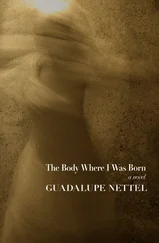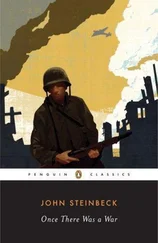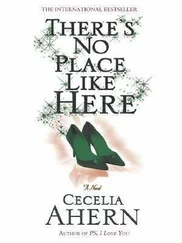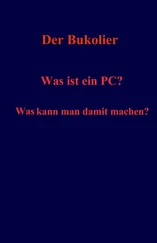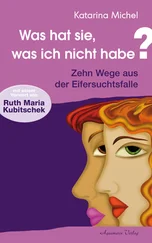I was a companion to his childhood, and he to my fatherhood, for only five months and five days. I was away from him for seventeen years, during which I saw him at widely separated intervals.
His first birthday came as I started my first year in exile around the world. I mailed him a birthday present in a small envelope. It was a poem entitled ‘Tamim’ and dated 13 June 1978.
He grew, sheltering in his beauty, and slowed my fear
But longing hastened my desire.
And I would speak truly if I said the windows
And the light and the grass resemble him
And that the poems cannot catch up with him
For he keeps running and rising
While poetry walks on two crutches.
We go through the Damascus Gate to the relatively shady Khan al-Zeit market. We make our way with difficulty through the market, which is crowded with passersby and buyers and sellers. We see few foreign tourists. Israel has succeeded in designing routes for tourists that stick to the Jewish bazaars that were erected after the occupation of the city in 1967. The result is that the tourist comes to Old Jerusalem and leaves again without discovering that there is an Arab quarter that is stuffed with bazaars and shops selling curios and necklaces and carved Christian and Islamic objects. This has destroyed the Arab Jerusalemites’ primary economic resource. We pass Zalatimo’s Sweets and Ja‘far’s Kanafeh but Tamim prefers to buy, rather than kanafeh, a piece of sweet semolina pastry.
We keep going in the direction of the Via Dolorosa.
It amazes me that I am now walking in the city as a father, when half a century before I walked in it as a son, and that now my son walks beside me.
I ask myself, is his Jerusalem my Jerusalem or something different? I saw it as a child and as an older man, and it was lost to me in between. Tamim is starting to get to know it now as a young man.
I come to it after absence and find myself comparing stone with stone and matching street with street and my school as it is now with my school as it was then and looking for my favorite shoe shop. I was very concerned to buy shoes that would please the teenage girls in Rukab’s Garden on Sundays, or a real wool jersey that would spare my mother long evenings with two exhausting knitting needles. In the here and now, Tamim rubs the stone of the road against the stone of imagination. He compares the reality of the mosque, the church, the crosses and the crescents with his images of them derived from the delight of narration, from colored books, statistics, and the magic of naming. He counts the ancient gates to confirm with his eyes the accuracy of what his ears had heard from the storyteller, who was me. Now he is inside the narrated scene — the narrated scene as it is in real life, needing no one to describe it. But, I tell myself, no reality cancels out imagination. Reality waylays us quickly but gives rise in the mind to further imagining. I come close to asking myself if there is a ‘truth’ outside the human ‘imagination,’ and am at loss for an answer.
I don’t know if I was right to be so surprised when Tamim asked me to take a photograph of him beneath the street sign on which Tariq al-Alam is written in Arabic and under that in Latin characters Via Dolorosa , with two words in Hebrew at the top. It would never have occurred to me that I would stop to take a photo here or anywhere else in Jerusalem. Everything was fixed in place and secure and natural, like my own presence there. The steps of Christ along the Via Dolorosa from the Lions Gate to the Church of the Resurrection were just one of the facts and features of the city, like the weather, the trees, and the ancient walls. The Via Dolorosa was just a street we used, a narrow street in which we took care of our affairs and did our shopping or which we went down on our way to the one next to it. All the sacred sites nearby with their names, and the minarets, mosques, churches, crosses, bells, columns, domes, and tombs of the sultans and saints to which these alluded, were the ordinary and familiar that was always where it always had been, to whose destiny and significance I gave no thought. ‘History’ was a street, a shop, sweets, shoes, schools, stubborn weeds on walls, teenagers’ quarrels, and lusts, attainable or unattainable — not a landmark where photos are taken. Taking pictures was the Japanese, European, and American tourists’ and pilgrims’ ‘thing,’ not our ‘thing.’
The narrow road takes us on a slight curve to the covered market. Then two Arab guards stop us at a small door. They’ve spotted the camera in Tamim’s hand.
“Tourists?”
“No, we’re from here.”
“Welcome. Go on in.”
We go through the door.
Suddenly, a burst of light fills the horizon. We forget the narrow, dark streets. It’s as though we’ve been transported to a newly discovered planet.
The sky lies stretched out at full length, as though it had woken up full of energy to start its morning, leaving some of its white pillows lying around forgotten in the form of clouds scattered randomly over its celestial bed sheet.
This is the Dome of the Rock.
Stand, stranger, in its shadows.
Take it in with all your senses.
Think of the fact that today it is you who is the stranger.
You are a stranger to it — you, its son, its rightful owner; you who, by virtue of eye and of memory, of documents and of history, of inscriptions, colors, trees, Qur’anic verses, poems, and aged tombstones, are its possessor.
Stand, stranger, and look:
This is the Dome of the Rock.
The daylight spreads its gold over the golden dome, whose vast crescent and octagonal walls are inscribed with ancient blue, with the supplications of pilgrims and the exhalations of those who pray.
The al-Aqsa Mosque and the Dome of the Rock stand side by side. Around and between them are centuries-old cypresses, eucalyptuses, palms, and other trees whose names I don’t know. To our right we see worshipers entering and exiting the mosque as they have done for hundreds of years. Everything is as it always has been except for the Occupation, as a result of which the Palestinian’s ability to pray here has become a dream that goes beyond religious prescriptions to become a political ‘struggle’ too.
Today Tamim’s dream comes true. He performs a prayer of greeting to the two mosques. He wants his prayer to be recorded in his personal history here in this place whose habit it is to call out to the five senses of those who see it, “Don’t slacken here for an instant. Don’t slacken here, senses. Do your duty to the full now. Do your job as well as you possibly can. Go everywhere. Smell, see, touch, taste. Learn how history becomes stone and identity a building.”
Tamim doesn’t take photos or ask me to take his; without anyone saying anything, we seem to have decided that the camera would turn us into tourists forever. We have thrown it into the nearest waste basket. Yet, just like one-day tourists, we have hurried on to the Church of the Resurrection and the Mosque of ‘Omar that stands beside it, built at the spot where the Caliph ‘Omar ibn al-Khattab prayed on entering Jerusalem, refusing to pray in the Church of the Resurrection in case later on the Muslims made his having prayed there an excuse to turn it into a mosque. He wished to demonstrate his respect for the church and to make sure that the Muslims who came after him would respect it as such forever. He wanted it to remain a Christian church. As a result, its ‘old’ cross stands alongside the ‘new’ crescent to this day.
Jerusalem has tired us. By ‘us’ I mean all humanity. I can’t think of a city on the face of the planet that has tired the world’s people as has Jerusalem. A city that refuses to be a city, land that refuses to be land. How can this be when the sacred has piled up here, in it, on it, and around it, layer upon layer, throughout the ages? Perhaps it was land before people became fully aware of what their world looked like, before news of God had reached us, before it had been trodden by the leather-strapped sandals of the prophets, walking their steps of faith. Perhaps it was land once, but with all this sanctity it has become, unfortunately, a piece of the heavens. Here the sacred has acquired the fluidity of clouds, of meaning, of imagination, to the point that the stones have lost their stone-ness, the streets their street-ness. The roof-ness of the roofs and domes has taken wing and the buildings are now roofed with meanings. Interpretations pile high but no sooner are they seized by the mind, hoping for clarification, than they are pushed aside by the hand of obscurity. Jerusalem’s solidity has turned into the fluidity of supplications and prayers. Even this heavy, towering, dark wall that surrounds it seems to come from an ancient dream that repeats itself every time a believer passes through its arches and gates, a dream that the new arrival is destined to live and the departing traveler is urged never to forget. Horses have crawled to it on wounded knees squealing beneath the longings of riders prepared to die. Temple after temple has been built in it as an abode for the soul of man. And it has risen and risen, year after year, century after century, until it has become inseparable from the sky; and Jerusalem wants to remain sky, and as mysterious and ambiguous as the sky.
Читать дальше

